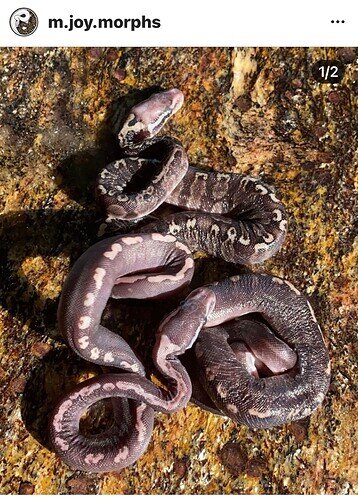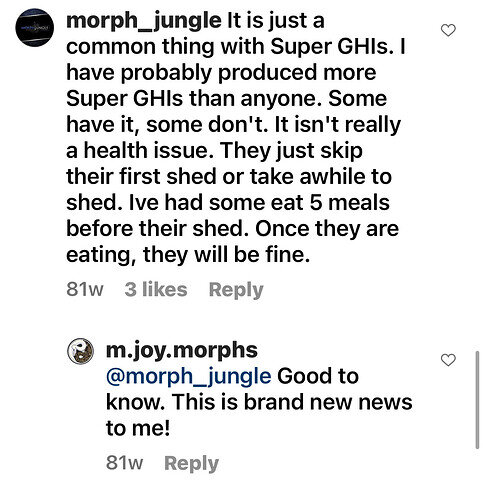The issue itself can’t be mimicked by bad husbandry. The stuck shed sure, but the baggy/wrinkly skin is genetic.
Justin @morph_jungle is probably the best resource. He’s pretty much the Super GHI guy. @mirandajoy experienced with her Super GHIs as well. I’ll rack my brain for some more.
Miranda did a better job showing it in photos, here are a couple from her IG. If you go to her page and scroll back to September of 2020 she’s got a video in one of her photo carousels that shows it pretty well.



